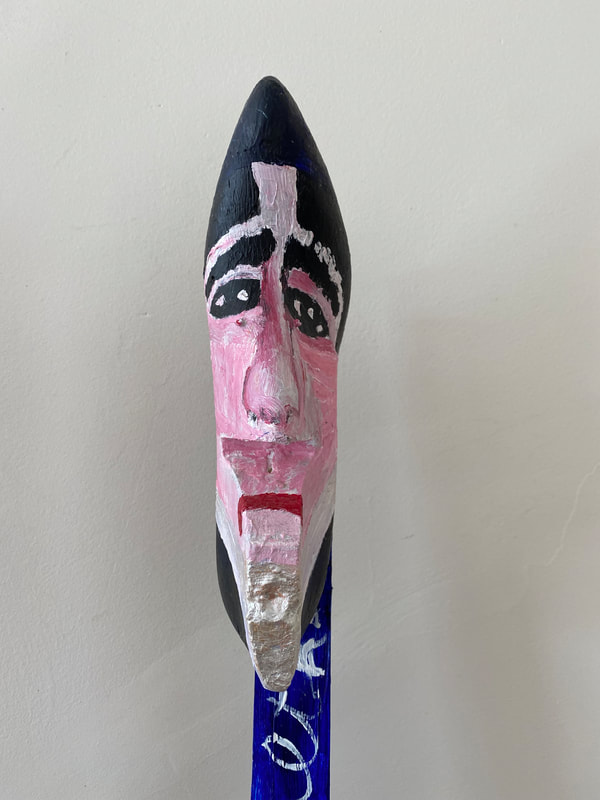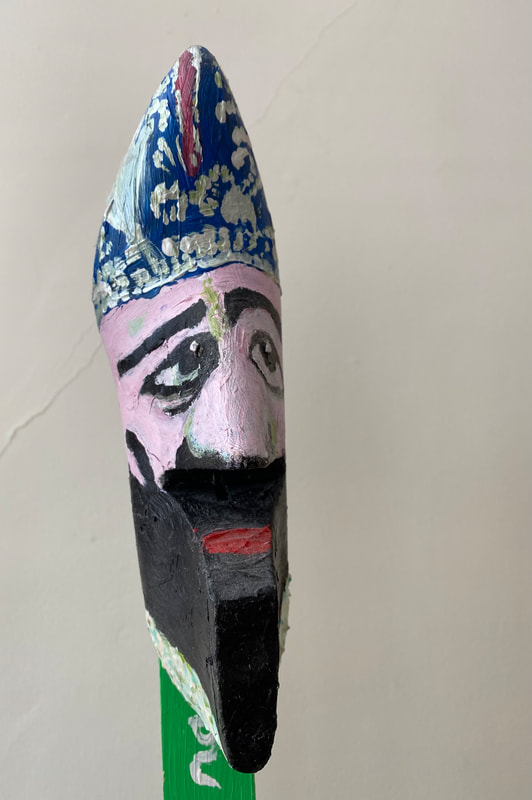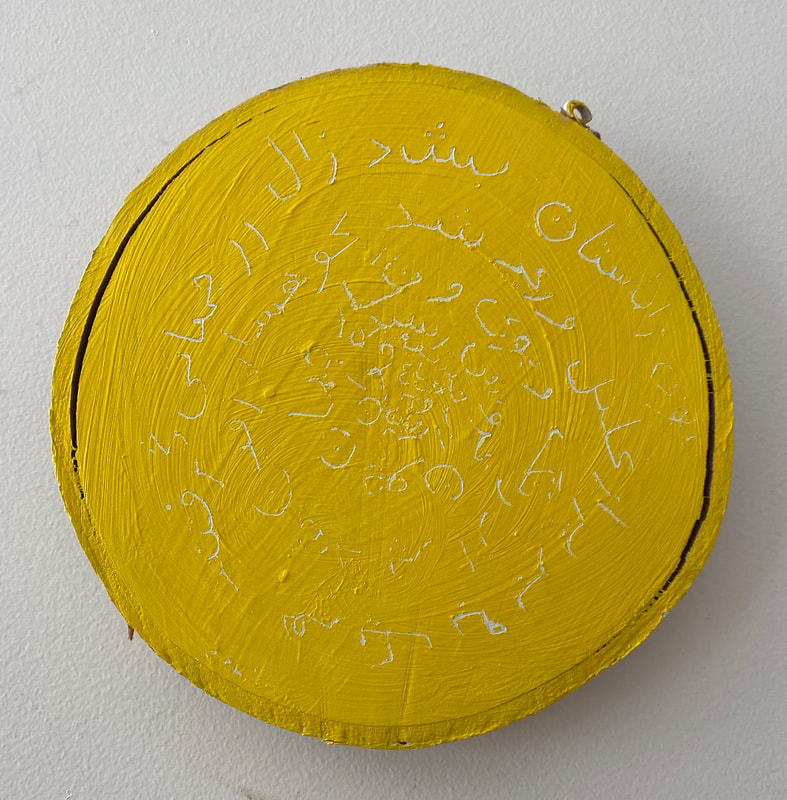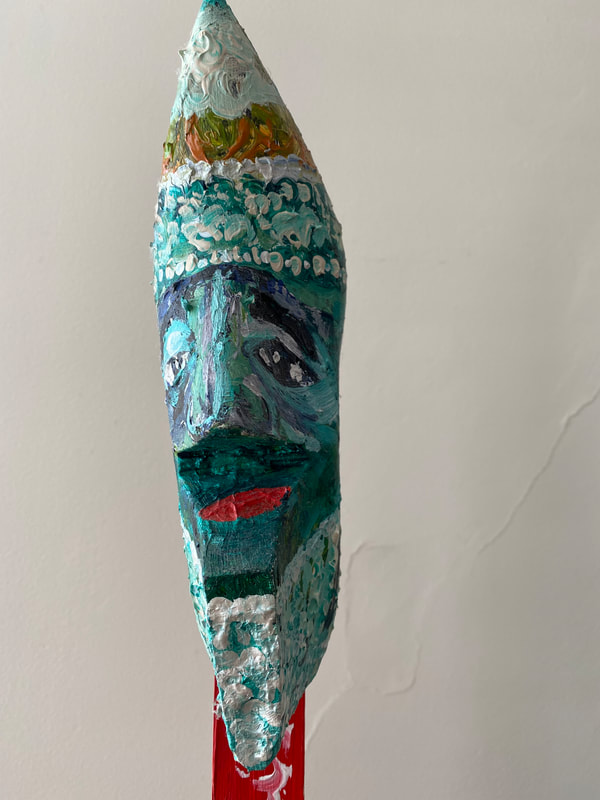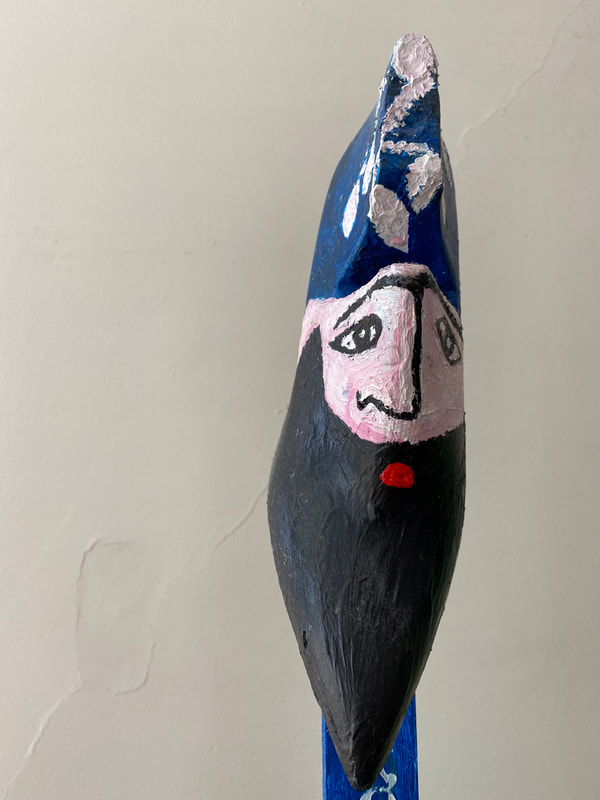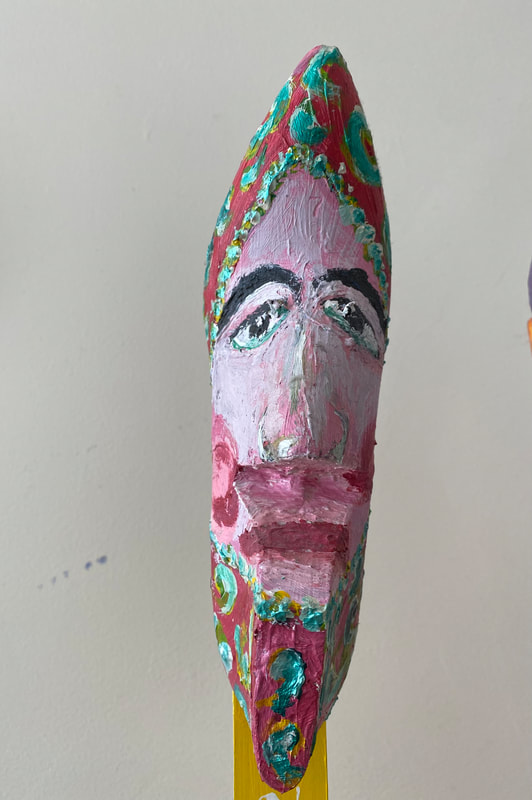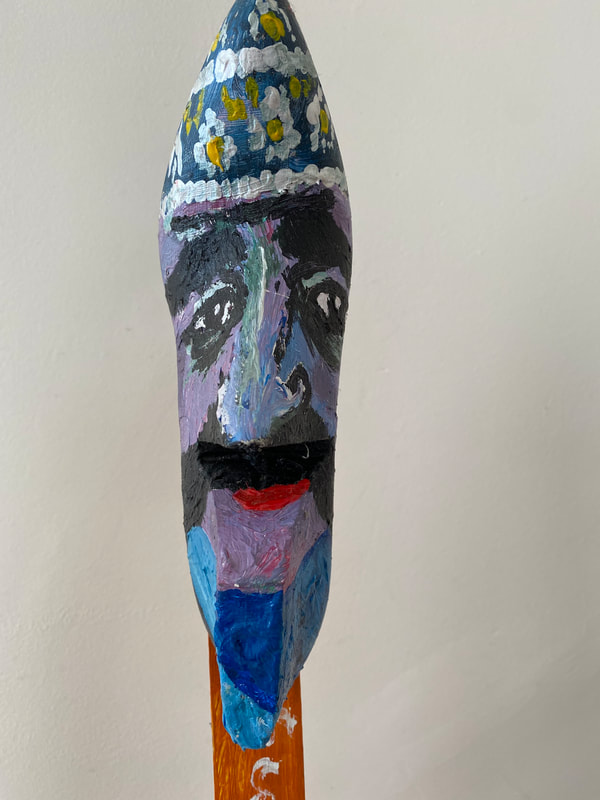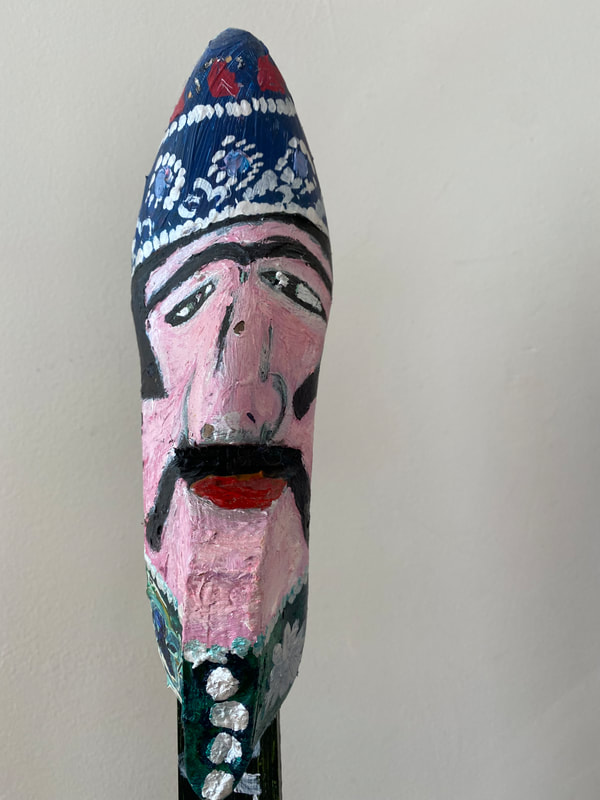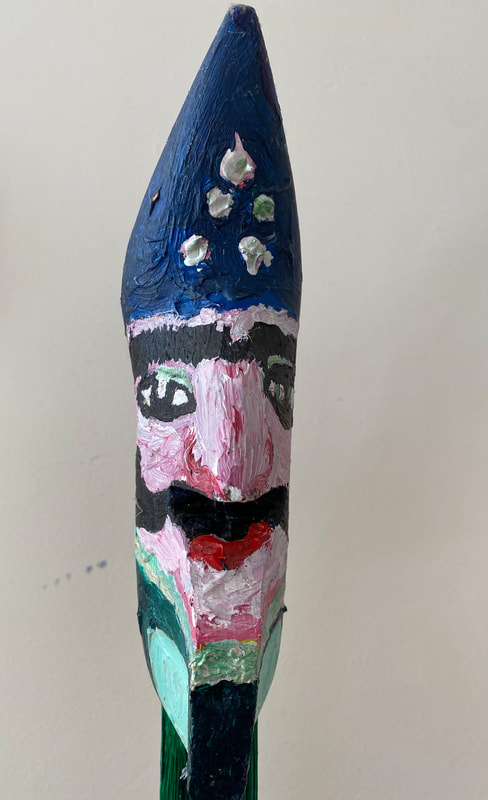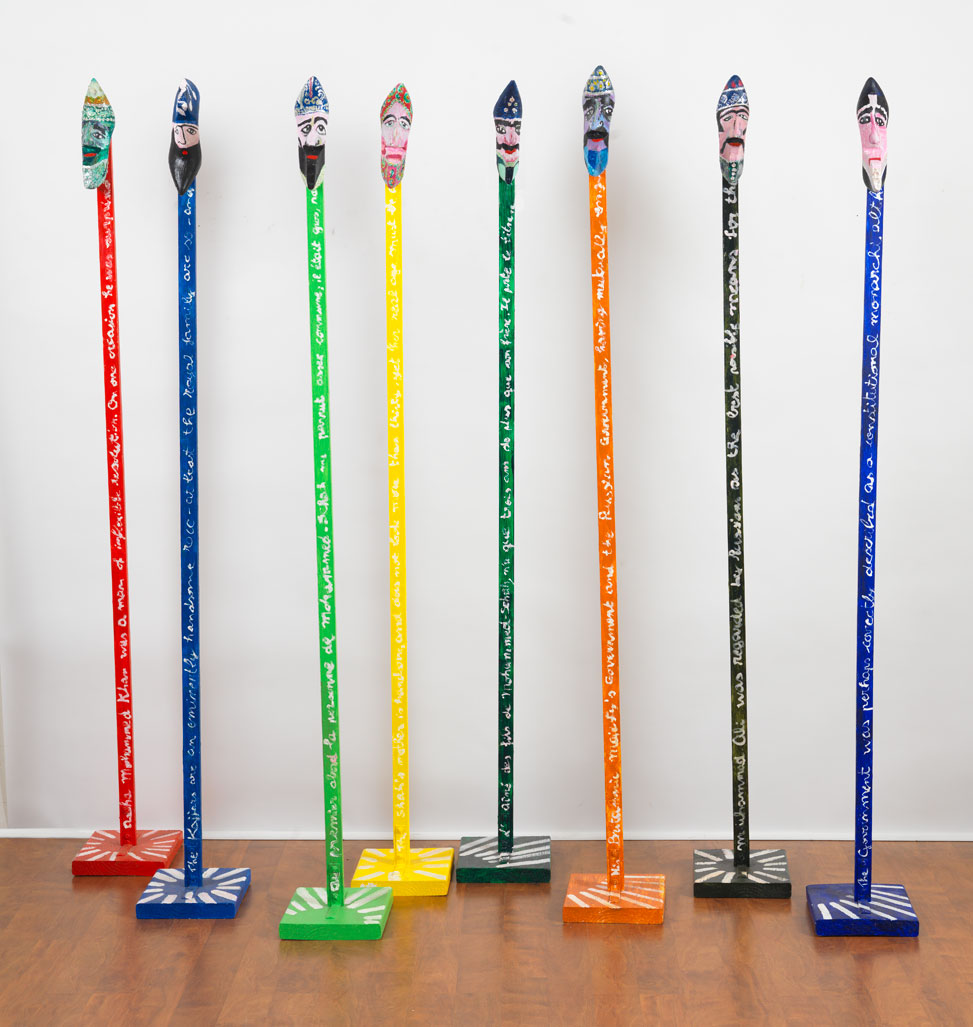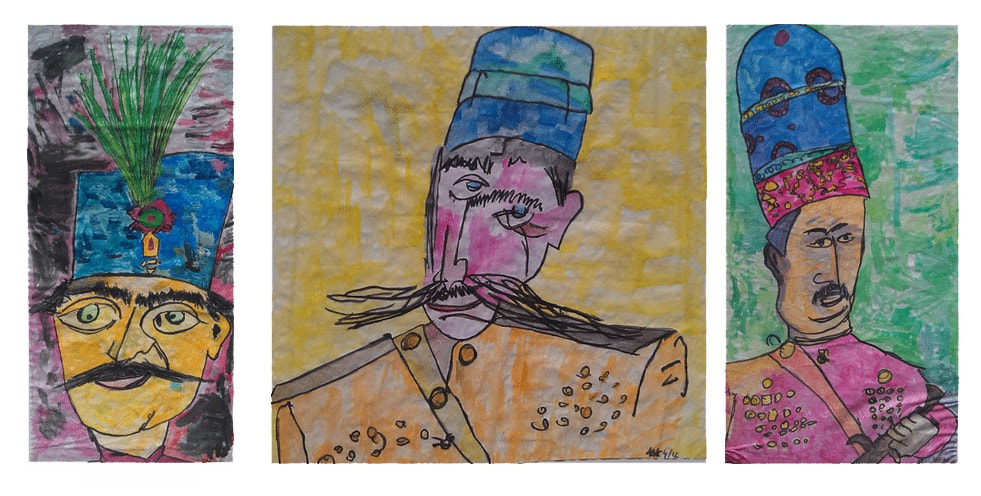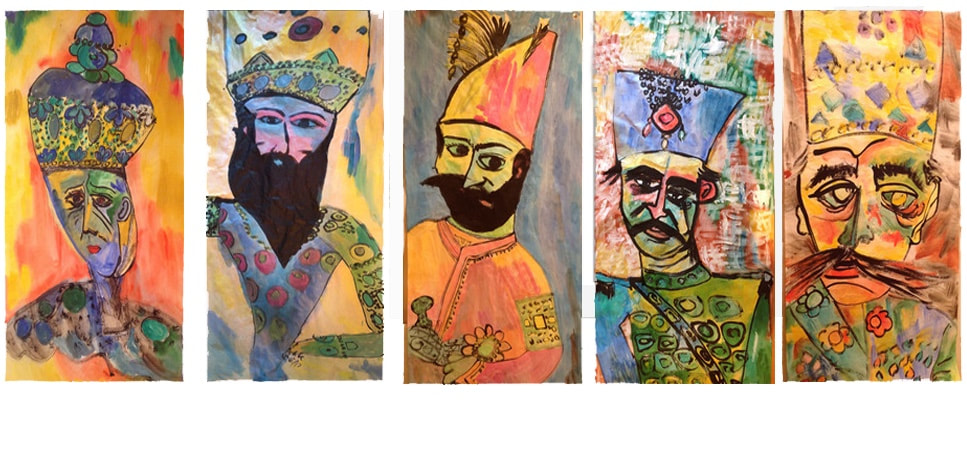Dynasty in perspective asks the question of how rulers make themselves fit into the molds created for them.
Each sculpture incorporates an unfinished sentence from one of the Western travelogue and the Anglo-Russian Convention of 1907, specifically:
Lady Mary Leonore Woulfe Sheil was the second wife of British lieutenant colonel Justin Sheil. Her book Glimpses of life and manners in Persia was published in 1856.
Prince Alexis Soltikoff was a Russian Prince and visual artist who travelled to Persia in the 19th century. His book Voyage en Perse was published in 1851.
W. Morgan Shuster was an American custom collector who was appointed by the Persian national parliament (madjles) as Treasurer of Persia during Ahmad Shah's reign. His book The strangling of Persia was published in 1912.
The Anglo-Russian Convention of 1907 is an agreement relating to the partition of Persia, Afghanistan, and Tibet. It was signed on August, 31 in St. Petersburg.
Each sculpture incorporates an unfinished sentence from one of the Western travelogue and the Anglo-Russian Convention of 1907, specifically:
Lady Mary Leonore Woulfe Sheil was the second wife of British lieutenant colonel Justin Sheil. Her book Glimpses of life and manners in Persia was published in 1856.
Prince Alexis Soltikoff was a Russian Prince and visual artist who travelled to Persia in the 19th century. His book Voyage en Perse was published in 1851.
W. Morgan Shuster was an American custom collector who was appointed by the Persian national parliament (madjles) as Treasurer of Persia during Ahmad Shah's reign. His book The strangling of Persia was published in 1912.
The Anglo-Russian Convention of 1907 is an agreement relating to the partition of Persia, Afghanistan, and Tibet. It was signed on August, 31 in St. Petersburg.
